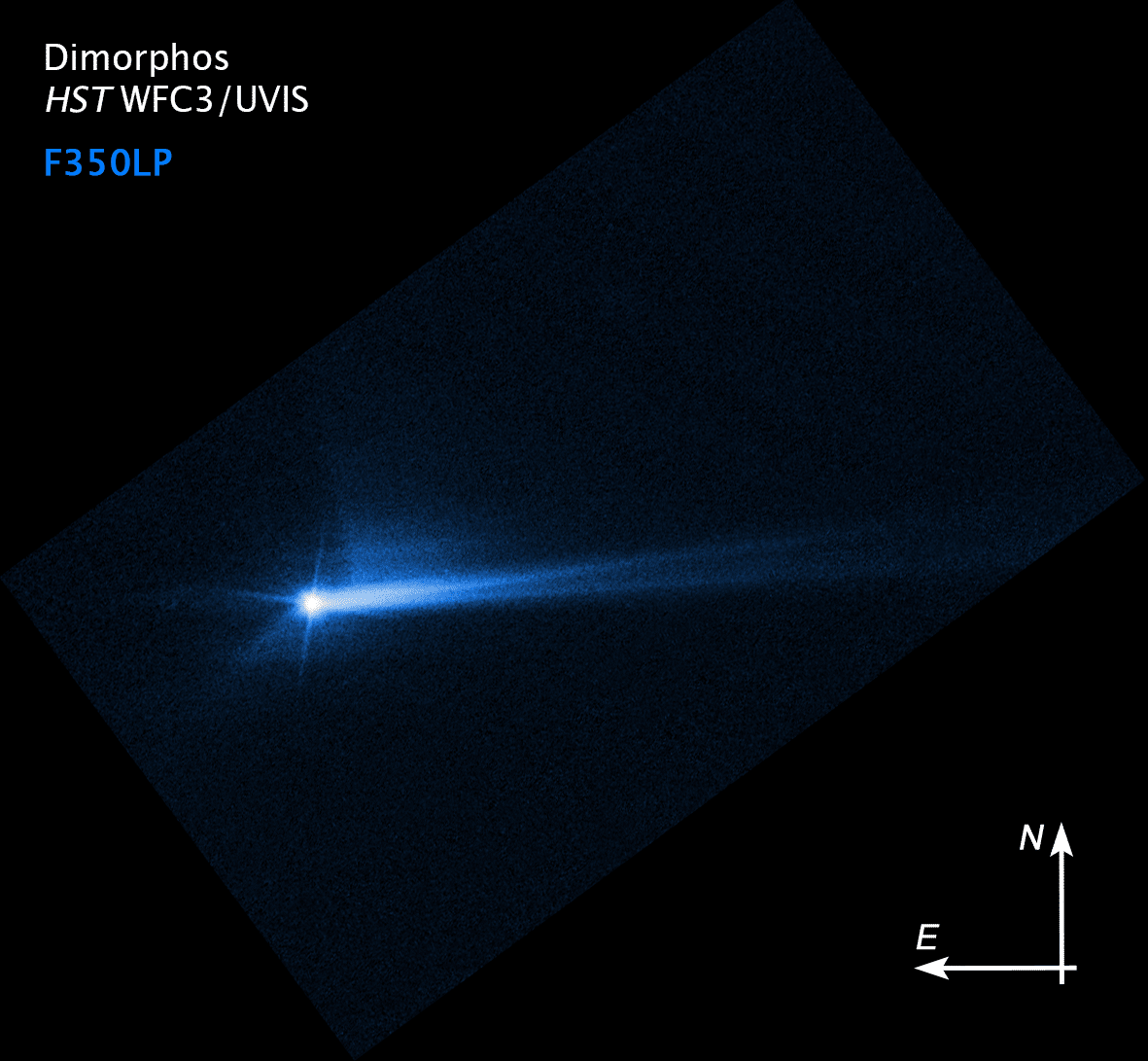The duration of Dimorphos' orbit of the asteroid Didamos was shortened by about half an hour

An analysis of data received over the past two weeks by NASA's Double Asteroid Redirection (DART) mission research team shows that the spacecraft's kinetic impact on its target asteroid, Dimorphos, successfully altered the asteroid's trajectory. This is the first time humanity has intentionally altered the motion of a celestial object and the first full-scale demonstration of asteroid deflection technology.
Before DART hit, Dimorphos took 11 hours and 55 minutes to orbit its larger parent asteroid, Didymus. Since DART's intentional collision with Dimorphos on September 26, astronomers have been using telescopes on Earth to measure how much that time has changed. Now, the research team has confirmed that the spacecraft's impact changed Dimorphos' orbit around Didymos by 32 minutes, shortening the 11-hour, 55-minute orbit to 11 hours, 23 minutes. This measurement has an uncertainty margin of plus or minus 2 minutes.
Before the rendezvous, NASA defined an orbit change of 73 seconds or more as a success. This early data shows that DART has exceeded this minimum benchmark by more than 25 times.
"This result is one important step toward understanding the full impact of DART's impact with its target asteroid," said Lori Glass, director of the Planetary Science Division at NASA Headquarters in Washington. "As the new data accumulates, astronomers will be able to better assess whether, and how, a mission like DART could be used in the future to help protect Earth from an asteroid collision should we ever spot one headed our way."
The research team still continues to collect data from ground-based observatories around the world - as well as from NASA's Jet Propulsion Laboratory's Goldstone Planetary Radar facilities in California and the National Science Foundation's Green Bank Observatory in West Virginia. They update the lap time measurement with frequent observations to improve its accuracy.
The position is now moving towards measuring the efficiency of the torque transfer from DART's collision at about 22,500 km/h with its target asteroid. For this, it is necessary to carry out an additional analysis of the "ejection" - many tons of rocks from the surface of the asteroid that were displaced into space by the impact. The explosion page improved DART's thrust against Dimorphus - like a jet of air flowing out of a balloon and "sending" the balloon in the opposite direction.
To successfully understand the knock-on effect, more information is needed on the asteroid's physical properties, such as its surface characteristics and hardness. These issues are still being investigated.
"DART has provided us with fascinating data on both the properties of asteroids and the effectiveness of kinetic impact as a planetary defense technology," said Nancy Chabot, DART coordination leader from the Johns Hopkins Applied Physics Laboratory (APL) in Laurel, Maryland. "The DART team continues to work on this rich dataset to fully understand the first planetary defense test of an asteroid deflection."
For this analysis, astronomers will continue to study images of Dimorphos taken by DART before the collision as well as those from the Italian Asteroid Imaging CubeSat (LICIACube), provided by the Italian Space Agency, to estimate the asteroid's mass and shape. In about four years, the European Space Agency's Hera project is also planned to conduct detailed surveys of both Dimorphos and Didymus, with a particular focus on the crater left by DART's impact and a precise measurement of Dimorphos' mass.
Neither Dimorphus nor Didymus pose any danger to Earth before or after DART's controlled collision with Dimorphus.
"We all have the responsibility to protect our planet. After all, this is the only home we have," said NASA Administrator Bill Nelson. "This mission shows that NASA is trying to be ready for whatever the universe throws at us. NASA has proven that we are serious as protectors of the earth. This is a watershed in the protection of the Earth and humanity as a whole, demonstrating commitment on the part of NASA's extraordinary team and partners from around the world."
For information on the NASA website
More on the subject on the science website
- NASA's DART spacecraft is aimed at impacting the target asteroid Dimorphos with the aim of deflecting it on September 26
- Deep space collision
- NASA will launch the DART spacecraft that will reach a double asteroid and try to divert its moon from its orbit
- When cinema and reality come together in the mission of dropping an asteroid: the DART spacecraft is launched
- NASA is making progress in developing a spacecraft to divert asteroids from their orbits
